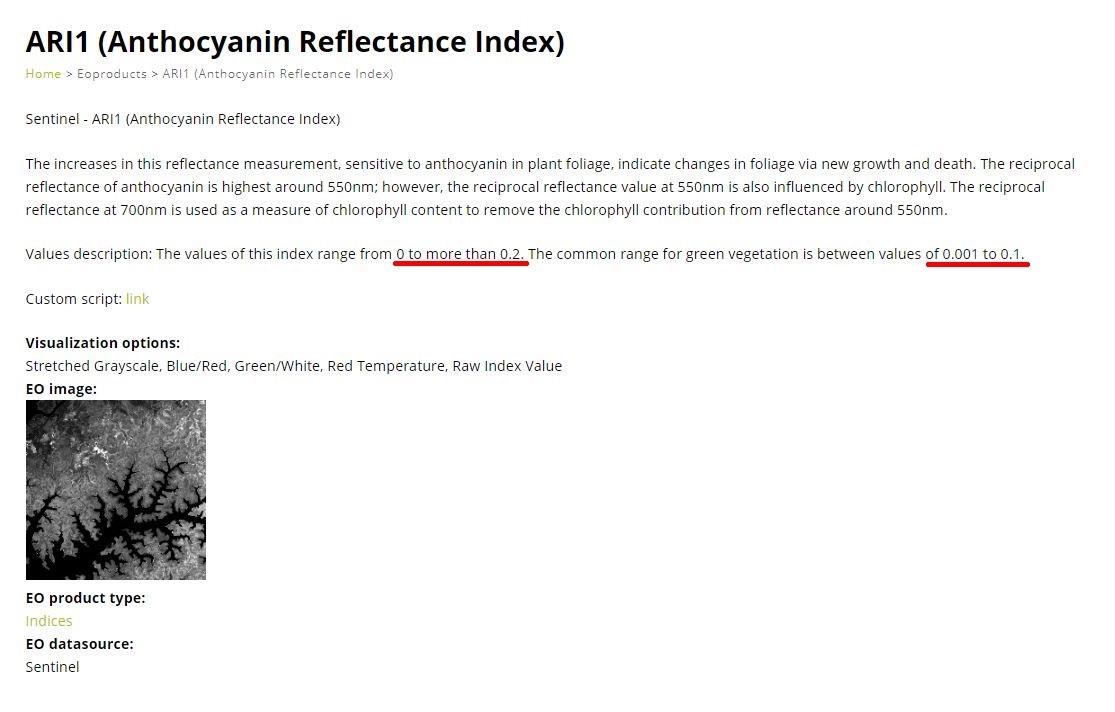Hi,, our description of the Anthocyanin Reflectance Index was taken from this website, which cites the original articles by Gitelson, Chivkunova, and Merzlyak. We found the information we were looking for in their freely available article from 2009.
The original ARI index, (1/R550)-(1/R700), has a wide range of values, theoretically unlimited. However, it should be only used for vegetation, since the anthocyanins are substances present in higher plant leaves.
If you examine only the values of ARI in forested areas, you will notice the values aggregating around 0 - 0.1. However, if you would take into account non-forested areas, such as lakes or barren rock, the values skyrocket to between mostly, but not exclusively, -30 and 30. This however, would not be a correct use of the index.
On page 1867 of the article , you can see the resulting graph displaying ARI index ranging from 0 to 0.2. This is due to the fact that all the ARI values of the examined trees were in that range. Had the authors considered a wider range of tree species, these values might differ.
In summary, ARI is not limited to values of 0 to 0.2, however, most ARI values for trees, which is what the index is intended for, do appear to be in this range.
Dear
First of all, I would like to thank all team members who have contributed to the creation of this great site. It really helps researchers. Then, thank you Monja for the very detailed reply and the reference article. I was looking at the original article, on page 1868, the author suggests band (760 to 800 nm) as NIR for calculation of mARI and CI red edge indices. While updated information about Anthocyanin Reflectance Index at Sentinel-Hub (https://www.sentinel-hub.com/eoproducts/ari1-anthocyanin-reflectance-index) shows the band 8 of Sentinel-2 to be used as NIR, which has a central wavelength around 842 nm. I am wondering why not band 7 of Sentinel-2? which has a central wavelength around 783 and it falls within the recommended range of the author.
Band 8 was initially chosen because it’s the default NIR band. However, under further consideration I agree that band 7 does cover the recommended range better. Note that band 8 has a resolution of 10 m, as opposed to band 7 with 20 m though. Thank you for the question!
Thank you for the reply. Much appreciated!


